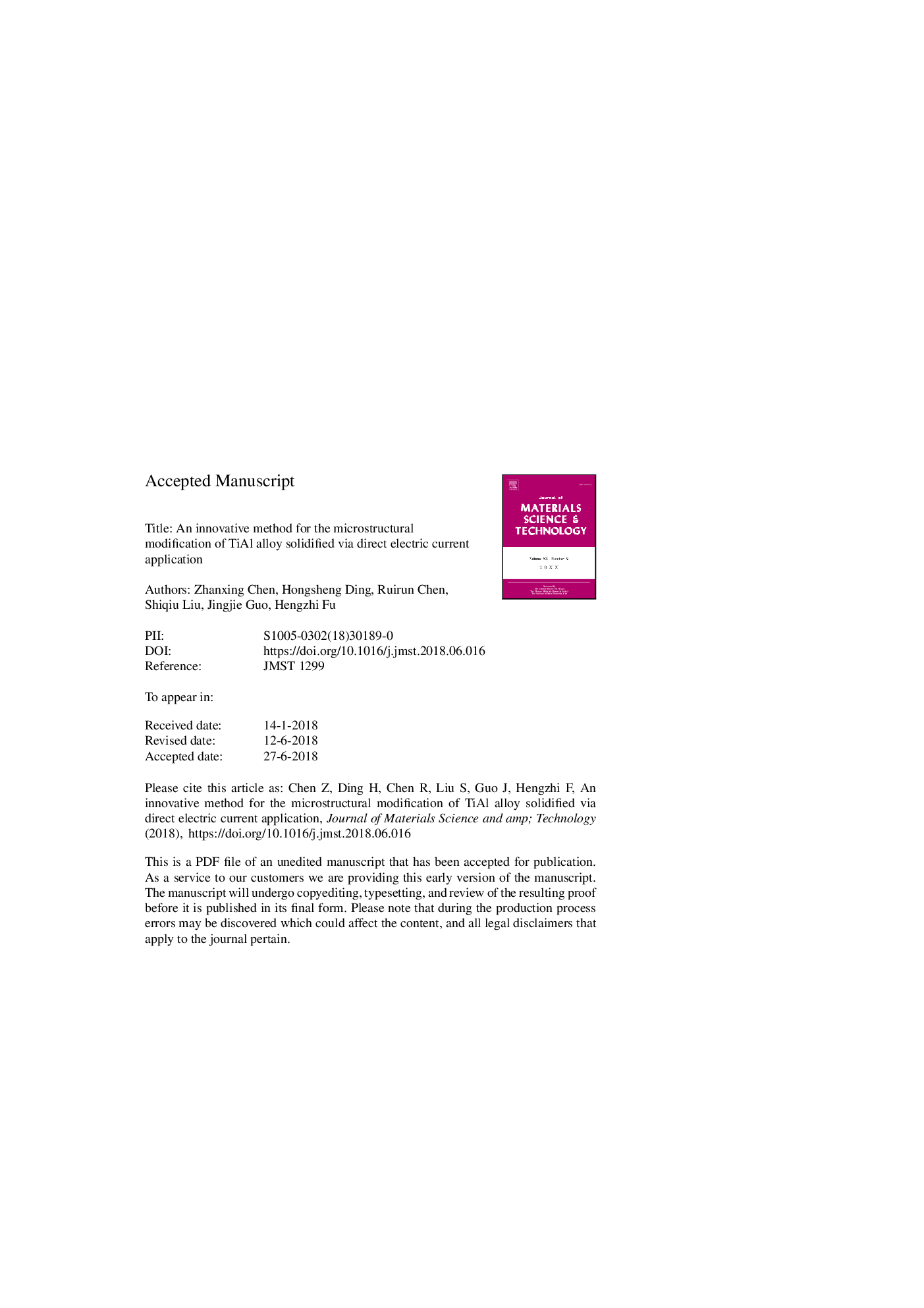| Article ID | Journal | Published Year | Pages | File Type |
|---|---|---|---|---|
| 10155785 | Journal of Materials Science & Technology | 2019 | 15 Pages |
Abstract
Ti-48Al-2Cr-2Nb alloy solidified with the application of direct electric current has a refined and homogeneous microstructure without segregation. We observed an initial decrease followed by a subsequent increase in grain size and lamellar spacing, with the increase in current density. Similar trend can also be obtained by varying the amount of α2-phase (Ti3Al). Using a directional solidification processing method, the columnar crystal microstructure transforms into an equiaxed crystal microstructure at a current density of 32-64âmA/mm2. High dislocation density is also introduced with a minimum cross-sectional grain size of 460âμm at a current density of 64âmA/mm2. The application of electric current alters the free energy of the critical nucleus and temperature via joule heating, causing a transformation from a columnar grain microstructure into an equiaxed grain microstructure. The increase in current density leads to a rise of the nucleation rate, and a resulting undercooling combined with temperature gradient contribute to growth of the primary phase, which finally results in grain coarsening at a critical current density of 96âmA/mm2. The climb and cross-slip of dislocation and the migration of grain boundary ultimately create variable lamellae spacing of TiAl alloy.
Related Topics
Physical Sciences and Engineering
Materials Science
Materials Chemistry
Authors
Zhanxing Chen, Hongsheng Ding, Ruirun Chen, Shiqiu Liu, Jingjie Guo, Hengzhi Fu,
